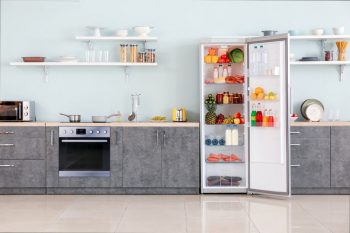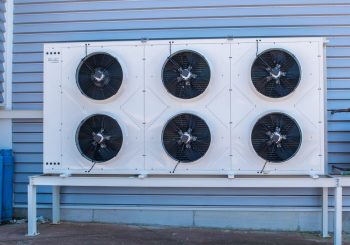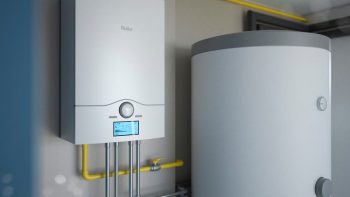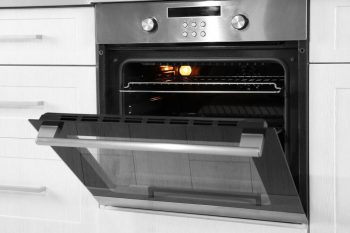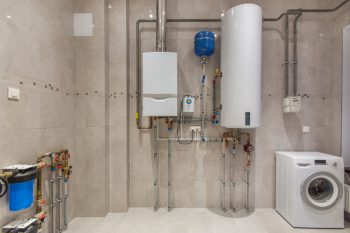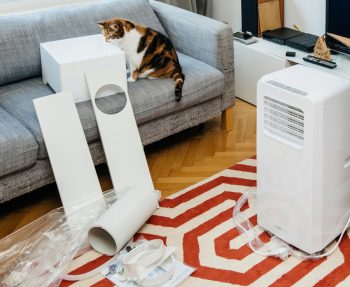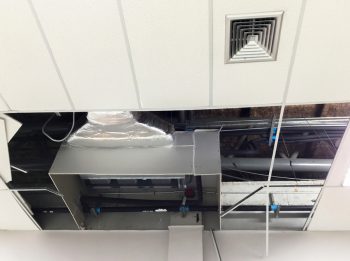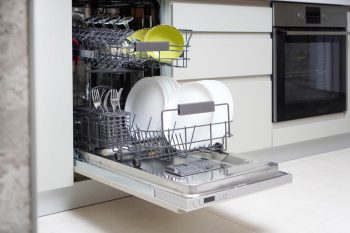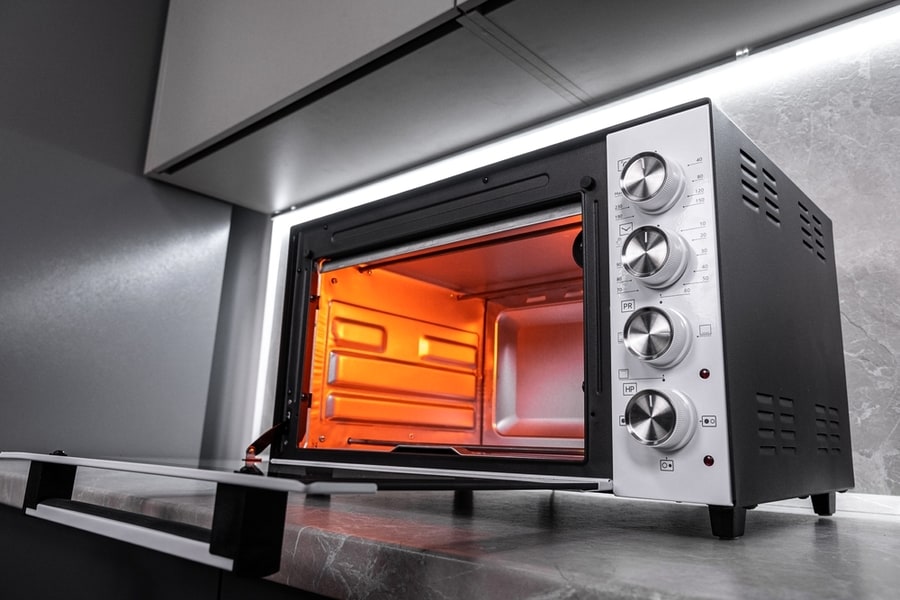
Like many people, you rely on your toaster oven for quick and convenient meals regularly. But did you know that the heat from your toaster oven could damage your kitchen cabinets?
Toaster ovens are a convenient and versatile appliance, perfect for cooking and reheating small meals and snacks. Due to this, they produce a large amount of heat for the process.
However, if your toaster oven is placed too close to your kitchen cabinets, the heat generated by the appliance can damage the cabinets and lead to costly repairs or replacements. It can make your cabinet bend, crack or discolor.
To prevent this, you must take a proactive approach to protect your cabinets from toaster oven heat.
It’s essential to protect cabinets, especially in the kitchen, as they are a major investment and an integral part of the overall design and functionality of the space.
By taking steps to safeguard your cabinets from heat damage, you can ensure that they remain in good condition for years to come.
Here are a few different strategies you can adopt to protect your cabinets from toaster oven heat:
- Installing a heat barrier/shield
- Using a toaster oven mat
- Positioning the oven toaster rightly
- Using a toaster oven with a built-in heat shield
- Proper ventilation
- Moving the oven toaster to another place
In this blog post, we’ll be discussing how to protect your cabinets from toaster oven heat.
The last thing you want is for your beautiful wood cabinets to become discolored or damaged due to persistent exposure to heat. Not only is this unattractive, but it can also be a safety hazard if the heat causes the cabinets to catch fire.
So, if you plan to use a toaster oven and aim to keep your kitchen in tip-top shape, this post is for you. We’ll be discussing the preventative measures, repair, and maintenance options extensively so you can enjoy your toaster oven without worrying about damaging your cabinets.
The Danger of Toaster Heat on Cabinet
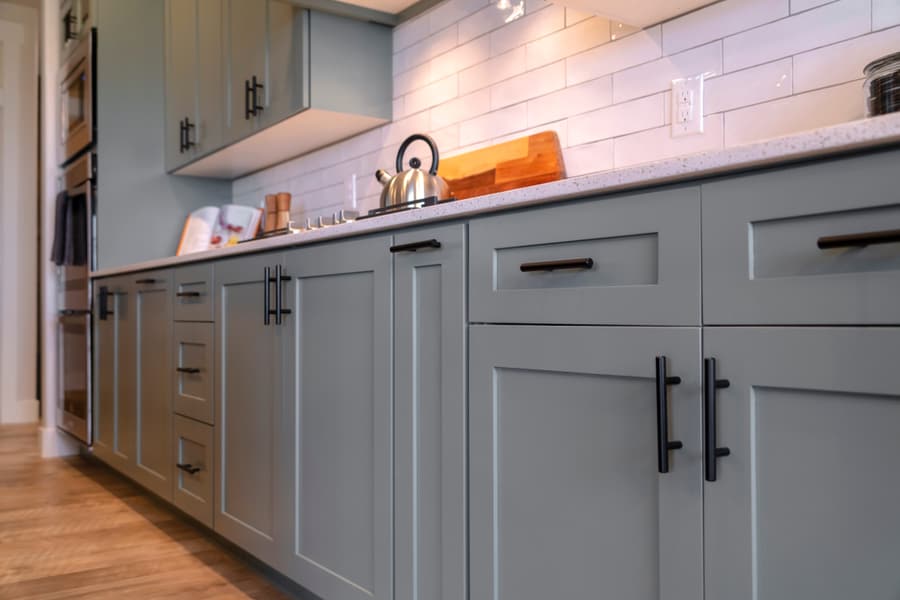
As we’ve discussed, toaster ovens can produce a large amount of heat, and if you do not properly manage this heat, it can cause damage to your kitchen cabinets.
So, in this section, we’ll be exploring different hazards toaster ovens can cause to a cabinet and how to avoid them:
- Cracking: This is one of the major effects of toaster heat on your kitchen cabinets. If the heat is not properly dispelled, it can cause the material of your cabinets to expand and contract, resulting in cracks and other damage. If your cabinet is cracked, it’ll not only be visually unappealing, but it can also weaken the structure of your cabinets and possibly cause issues with their function.
- Bending or Warping: Another danger the heat from your toaster oven, if placed too close to your cabinets, can cause is to bend the cabinet or distort its shape. Moreover, if the heat from your toaster oven is not properly dissipated, it can cause the material of your cabinets to expand and contract, leading to warping over time. This problem can especially arise if your cabinet is made of wood or other materials prone to warping when exposed to heat. Distorted cabinets can be visually unappealing and cause problems with the function of the cabinets, such as the impaired function of doors and drawers.
- Discoloration: Toaster oven heat can cause discoloration of your cabinets. If your cabinet is exposed to heat over a long time, it may change color or become discolored.
Toaster oven heat can cause discoloration of your cabinets if they are subjected to heat over a long period. This can be a disgusting issue, and depending on the specific material of your cabinets, it may not be easy to repair. Discolored cabinets can be a visual distraction and may not match the rest of your kitchen decor.
To prevent these issues and protect your cabinets from toaster oven heat, you have to take a proactive approach and use the appropriate methods to manage the heat produced by your toaster oven. The next section will explore effective methods for protecting your cabinets from toaster oven heat.
How To Protect Cabinets From Toaster Oven Heat
Now that we’ve discussed the dangers of toaster oven heat on your kitchen cabinets, it’s time to focus on the solutions and methods for protecting your cabinets from this heat.
You can take several practical steps to manage the heat produced by your toaster oven and prevent damage to your cabinets.
In this section, we’ll explore a few effective methods for protecting your cabinets from toaster oven heat and ensure that your toaster oven is used safely and responsibly.
Whether you’re looking to protect your existing cabinets or prevent issues with new cabinets, these methods can effectively safeguard your kitchen.
1. Installing a Heat Barrier/Shield
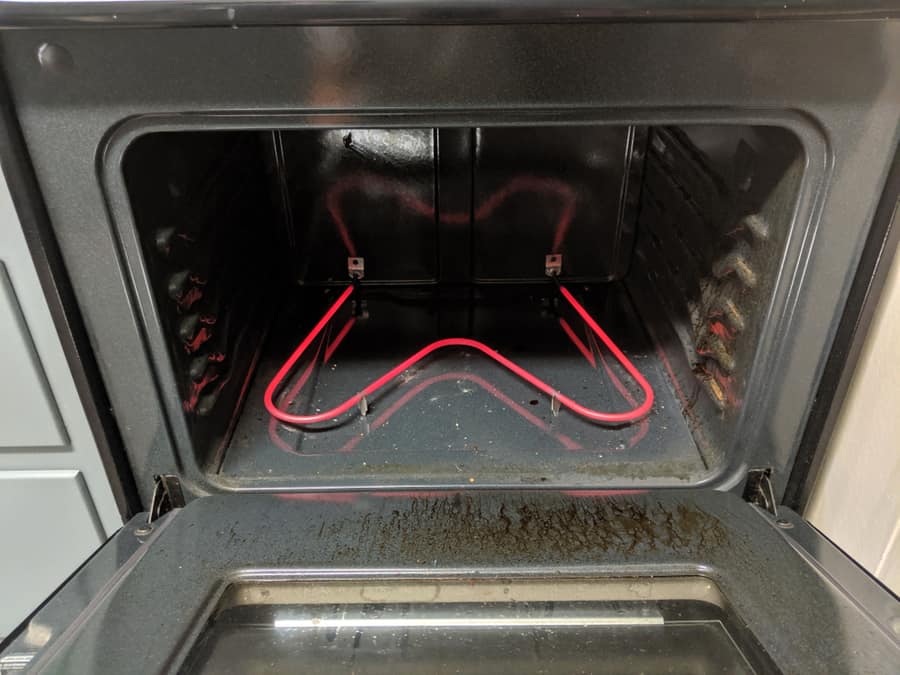
If you’re concerned about the heat produced by your toaster oven potentially damaging your cabinets, an effective protective method you should consider is installing a heat shield or barrier.
A heat shield is a physical barrier between the toaster oven and the cabinets, helping to deflect the heat away from your cabinets. Different kinds of heat shields are available, made from materials such as aluminum foil or heat-resistant materials.
Before you install a heat shield, you first have to determine the best location for the shield based on your kitchen’s layout and the positioning of your toaster oven.
Then measure the distance between your toaster oven and your cabinets, after which you cut the heat shield to the right size.
Next, attach the heat shield to either the back of your toaster oven, the underside of your cabinets, or the wall, depending on the specific design of your heat shield. Some heat shields may require additional mounting hardware or adhesive to secure them.
It’s crucial to understand that heat shields are not a replacement for proper ventilation and should be used in conjunction with other methods for protecting your cabinets from toaster oven heat.
In addition, make sure that your heat shield is made of a durable, heat-resistant material that can withstand the heat produced by your toaster oven.
Lastly, follow the manufacturer’s instructions for installing the heat shield to ensure that it is properly secured and effective at protecting your cabinets from heat damage.
2. Using a Toaster Oven Mat
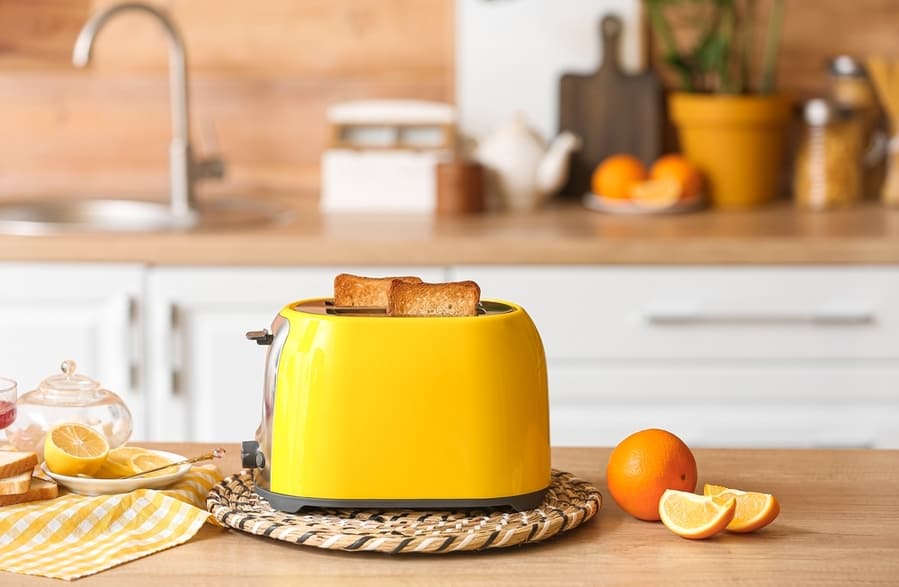
An effective way to protect your cabinets from toaster oven heat is to use a toaster oven mat or liner. This protective barrier is placed between the toaster oven and the surface on which it sits, and they help to insulate the cabinets from the heat generated by the appliance.
When you place a toaster oven mat or liner between the toaster oven and the cabinets, you can help reduce the heat transmitted to the cabinets and prevent damage.
There are two main types of toaster oven mats and liners:
- Silicone mats are made of a flexible and heat-resistant material. They are also easy to clean and store. They are also resistant to stains and odors, making them a popular choice for many homeowners. They are also non-slip, so they can help prevent the toaster oven from sliding around on the countertop.
- On the other hand, fiberglass mats are made of a more rigid material and offer excellent heat resistance and durability. They may be a bit more difficult to clean than silicone mats, but they can be cut to fit your toaster oven and provide a more secure and stable surface for the appliance.
When choosing a toaster oven mat or liner, you need to consider the size and shape of your oven and the type of surface it will be placed on. Additionally, you need to consider the ease of cleaning and the mat’s or liner’s durability.
Follow the manufacturer’s instructions, including cleaning and storage recommendations to properly use and care for a toaster oven mat or liner.
3. Positioning the Oven Toaster Rightly
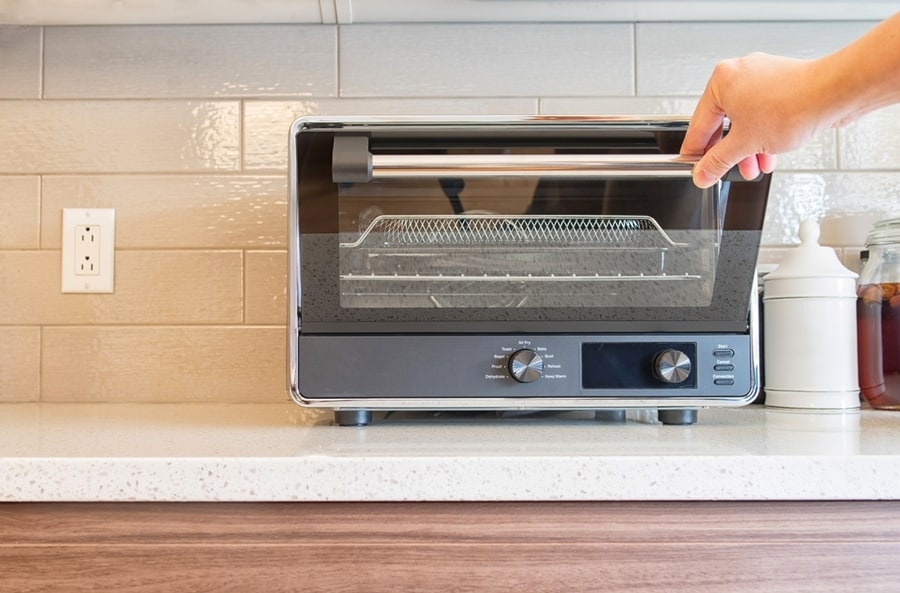
The appliance’s location can significantly impact the surrounding areas when using a toaster oven. If you place the toaster oven too close to your cabinets, the heat it produces can damage the cabinets over time.
To avoid this damage, you must be mindful of how you place your toaster oven. Keep the appliance a safe distance from your cabinets to reduce the risk of heat transfer.
The exact distance will depend on the specific model of your toaster oven, so it’s a good idea to refer to the manufacturer’s recommendations.
In general, it’s a good idea to leave at least a few inches of space between the toaster oven and any combustible materials. You’ll also want to avoid placing flammable materials near the toaster oven, which can increase the fire risk.
Keep the appliance away from walls and other objects that may block airflow and cause the toaster oven to produce excess heat.
4. Use a Toaster Oven With a Built-In Heat Shield

If you’re concerned that the heat from your toaster oven can impact your cabinet, consider using a toaster oven with a built-in heat shield. These ovens are designed with an extra layer of protection to help prevent heat transfer to surrounding areas.
This toaster oven can be especially helpful if you want to place it close to your cabinets or have limited kitchen space.
When shopping for a toaster oven with a built-in heat shield, remember a few things.
First, look for a model with a durable, heat-resistant heat shield. This will help ensure that the heat shield can withstand the heat produced by the toaster oven and provide maximum protection for your cabinets.
Moreover, consider the size and capacity of the toaster oven. If you have a large kitchen and plan on using the toaster oven for big meals or cooking various foods, you’ll want to look for a model with a larger capacity and more powerful heating elements.
On the other hand, a smaller or more compact model may be suitable if you have a smaller kitchen or only plan on using the toaster oven for smaller meals or snacks.
5. Install a Cabinet Fan or Ventilation System

If you’re looking for a more permanent solution to protect your cabinets from toaster oven heat, consider installing a cabinet fan or ventilation system.
A cabinet fan or ventilation system works by circulating the air inside the cabinet and dissipating the heat produced by the toaster oven. This can help to reduce the heat buildup inside the cabinet and prevent damage to the wood or other materials.
Moreover, a cabinet fan can also help improve the overall air circulation in your kitchen and keep it fresh and comfortable. This protective method is more suitable for you if you cannot move your toaster oven or if you prefer to keep it in a certain location.
When choosing a cabinet fan or ventilation system, there are a few factors to consider. Some include:
- Size: Make sure to select a size appropriate for your toaster oven and kitchen layout.
- Type: You’ll also want to consider the type of ventilation system that works best for your needs, such as a ducted or ductless system.
Installing a cabinet fan or ventilation system can be a DIY project, but it’s generally relatively easy if you have basic handyman skills.
Just be sure to follow the manufacturer’s instructions and take all necessary safety precautions.
6. Moving the Oven Toaster to Another Place
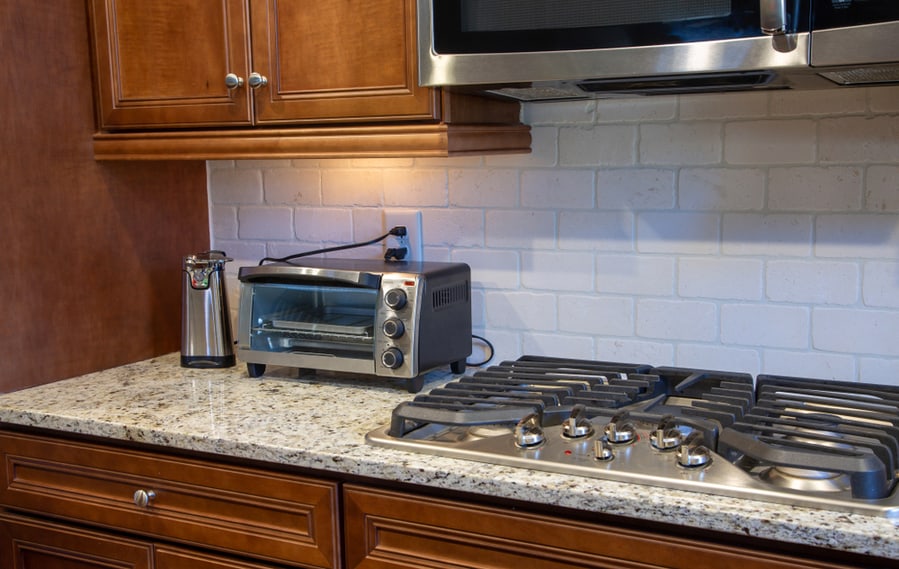
One of the simplest ways to protect your cabinets from toaster oven heat is to move them to a different location. This option can be especially useful if you have a large kitchen with plenty of counter space or an alternate location where the toaster oven could be used.
When you move the appliance on a different surface, such as the countertop or a separate appliance cart, you can help reduce the heat transmitted to the cabinets.
Locations to move it to can include countertops, appliance carts, wall mounts, etc. When choosing a new location for your toaster oven, select a spot near an outlet to easily plug in the appliance.
Also, avoid placing the toaster oven too close to flammable materials, such as curtains or paper towels.
Conclusion
Protecting your cabinets from toaster oven heat is important to ensure that they remain in good condition and continue functioning effectively in your kitchen. There are several options available for safeguarding your cabinets, including:
- Moving the toaster oven to a different location.
- Using a toaster oven tray or mat.
- Installing a cabinet fan or ventilation system.
- Using a heat shield or barrier.
When choosing a method for protecting your cabinets, you must consider your needs and circumstances. Moving it might be the simplest and most effective solution if you have plenty of counter space and a suitable location for the toaster oven.
On the other hand, if you can’t move the toaster oven or prefer to keep it in a certain spot, use a toaster oven tray or mat, install a cabinet fan or ventilation system, or use a heat shield or barrier might be more suitable options.
No matter which method you choose, be sure to follow all safety precautions and the manufacturer’s instructions when using your toaster oven. When you take these steps, you can enjoy the convenience of your appliance without damaging your cabinets or risking your safety.
Frequently Asked Questions
What Materials Make a Good Heat Shield?
A good heat shield is made up of materials with high thermal conductivity i.e. the ones that are able to withstand the heat produced by your toaster oven. Some of these materials include:
- Aluminum foil
- Copper
- Ceramic
- Glass
- Silicon
When selecting a material for a heat shield, you need to consider the level of heat exposure and the specific application.
Different materials may have different properties and capabilities of heat resistance, so it’s important to choose the one that is most suitable for your needs.
How Do I Protect My Countertop From My Toaster Oven?
You can use a heat-resistant mat or tray under the appliance. You can also install a cabinet fan or ventilation system to help dissipate heat and prevent damage to the countertop.
Alternatively, you can move the toaster oven to a different location or use a heat shield or barrier between the appliance and the countertop.

